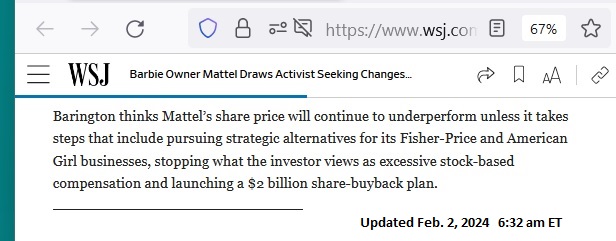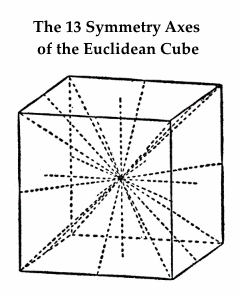


See as well Froebel in this journal.
"At CERN the LHC has reached design luminosity,* and is
breaking records with a fast pace of new collisions. This may
have something to do with the report that the LHC is also
about to tear open a portal to another dimension."
See also the following figure from the Log24 Bion posts —

— and Greg Egan's short story "Luminous":
"The theory was, we’d located part of the boundary
between two incompatible systems of mathematics –
both of which were physically true, in their respective
domains. Any sequence of deductions which stayed
entirely on one side of the defect – whether it was the
'near side', where conventional arithmetic applied, or
the 'far side', where the alternative took over – would
be free from contradictions. But any sequence which
crossed the border would give rise to absurdities –
hence S could lead to not-S."
— Greg Egan, Luminous
(Kindle Locations 1284-1288).
* See a definition.
A passage accessed via the new URL Starbrick.art* —
Thursday, February 25, 2021
|
A related cultural note suggested by the New York Times obituary today
of fashion designer Mary McFadden, who reportedly died yesterday
(a Friday the Thirteenth) and is described by the Times as a late-life
partner of "eightfold-way" physicist Murray Gell-Mann —
* A reference to the 2-column 4-row matrix (a "brick") that underlies
the patterns in the Miracle Octad Generator of R. T. Curtis. The only
connection of this eight-part matrix to Gell-Mann's "Eightfold Way"
that I know of is simply the number 8 itself.
|
"At CERN the LHC has reached design luminosity,
— Peter Woit, Thursday, June 30, 2016, |
Another sort of design luminosity —
From a post by Ivars Peterson, Director
of Publications and Communications at
the Mathematical Association of America,
at 19:19 UTC on June 19, 2010—
Exterior panels and detail of panel,
Michener Gallery at Blanton Museum
in Austin, Texas—

Peterson associates the four-diamond figure
with the Pythagorean theorem.
A more relevant association is the
four-diamond view of a tesseract shown here
on June 19 (the same date as Peterson's post)
in the "Imago Creationis" post—
This figure is relevant because of a
tesseract sculpture by Peter Forakis—

This sculpture was apparently shown in the above
building— the Blanton Museum's Michener gallery—
as part of the "Reimagining Space" exhibition,
September 28, 2008-January 18, 2009.
The exhibition was organized by
Linda Dalrymple Henderson, Centennial Professor
in Art History at the University of Texas at Austin
and author of The Fourth Dimension and
Non-Euclidean Geometry in Modern Art
(Princeton University Press, 1983;
new ed., MIT Press, 2009).
For the sculptor Forakis in this journal,
see "The Test" (December 20, 2009).
"There is such a thing
as a tesseract."
— A Wrinkle in TIme
Friday, August 14, 2009 @ 10:45 a.m.
“Amphitheater – George Kembel –
George Kembel is a co-founder and currently the executive director of the Stanford d.school, also known as the Hasso Plattner Institute of Design at Stanford University….”
Background:
“Plattner is said to be the 11th richest man in Germany with an estimated fortune of 5 billion USD, according to Forbes….
Plattner is a major owner of the San Jose Sharks hockey team….”
|
|
VS. |
See also recent Log24 entries.
Kessler died of a wasp sting
on Monday, August 10, 2009.
Some philosophical background
for those who prefer Native American
religions to the Abrahamic religions
promoted at Chautauqua:
On the Gleaming Way,
by John Collier.
Chapter One:
“Native American Time.”
Hermann Hesse's 1943 The Glass Bead Game (Picador paperback, Dec. 6, 2002, pp. 139-140)–
"For the present, the Master showed him a bulky memorandum, a proposal he had received from an organist– one of the innumerable proposals which the directorate of the Game regularly had to examine. Usually these were suggestions for the admission of new material to the Archives. One man, for example, had made a meticulous study of the history of the madrigal and discovered in the development of the style a curved that he had expressed both musically and mathematically, so that it could be included in the vocabulary of the Game. Another had examined the rhythmic structure of Julius Caesar's Latin and discovered the most striking congruences with the results of well-known studies of the intervals in Byzantine hymns. Or again some fanatic had once more unearthed some new cabala hidden in the musical notation of the fifteenth century. Then there were the tempestuous letters from abstruse experimenters who could arrive at the most astounding conclusions from, say, a comparison of the horoscopes of Goethe and Spinoza; such letters often included pretty and seemingly enlightening geometric drawings in several colors."
From Siri Hustvedt, author of Mysteries of the Rectangle: Essays on Painting (Princeton Architectural Press, 2005)– What I Loved: A Novel (Picador paperback, March 1, 2004, page 168)–
A description of the work of Bill Wechsler, a fictional artist:
"Bill worked long hours on a series of autonomous pieces about numbers. Like O's Journey, the works took place inside glass cubes, but these were twice as large– about two feet square. He drew his inspiration from sources as varied as the Cabbala, physics, baseball box scores, and stock market reports. He painted, cut, sculpted, distorted, and broke the numerical signs in each work until they became unrecognizable. He included figures, objects, books, windows, and always the written word for the number. It was rambunctious art, thick with allusion– to voids, blanks, holes, to monotheism and the individual, the the dialectic and yin-yang, to the Trinity, the three fates, and three wishes, to the golden rectangle, to seven heavens, the seven lower orders of the sephiroth, the nine Muses, the nine circles of Hell, the nine worlds of Norse mythology, but also to popular references like A Better Marriage in Five Easy Lessons and Thinner Thighs in Seven Days. Twelve-step programs were referred to in both cube one and cube two. A miniature copy of a book called The Six Mistakes Parents Make Most Often lay at the bottom of cube six. Puns appeared, usually well disguised– one, won; two, too, and Tuesday; four, for, forth; ate, eight. Bill was partial to rhymes as well, both in images and words. In cube nine, the geometric figure for a line had been painted on one glass wall. In cube three, a tiny man wearing the black-and-white prison garb of cartoons and dragging a leg iron has
— End of page 168 —
opened the door to his cell. The hidden rhyme is "free." Looking closely through the walls of the cube, one can see the parallel rhyme in another language: the German word drei is scratched into one glass wall. Lying at the bottom of the same box is a tiny black-and-white photograph cut from a book that shows the entrance to Auschwitz: ARBEIT MACHT FREI. With every number, the arbitrary dance of associations worked togethere to create a tiny mental landscape that ranged in tone from wish-fulfillment dream to nightmare. Although dense, the effect of the cubes wasn't visually disorienting. Each object, painting, drawing, bit of text, or sculpted figure found its rightful place under the glass according to the necessary, if mad, logic of numerical, pictorial, and verbal connection– and the colors of each were startling. Every number had been given a thematic hue. Bill had been interested in Goethe's color wheel and in Alfred Jensen's use of it in his thick, hallucinatory paintings of numbers. He had assigned each number a color. Like Goethe, he included black and white, although he didn't bother with the poet's meanings. Zero and one were white. Two was blue. Three was red, four was yellow, and he mixed colors: pale blue for five, purples in six, oranges in seven, greens in eight, and blacks and grays in nine. Although other colors and omnipresent newsprint always intruded on the basic scheme, the myriad shades of a single color dominated each cube.
The number pieces were the work of a man at the top of his form. An organic extension of everything Bill had done before, these knots of symbols had an explosive effect. The longer I looked at them, the more the miniature constructions seemed on the brink of bursting from internal pressure. They were tightly orchestrated semantic bombs through which Bill laid bare the arbitrary roots of meaning itself– that peculiar social contract generated by little squiggles, dashes, lines, and loops on a page."
|
From 2002:
Above: Dr. Harrison Pope, Harvard professor of psychiatry, demonstrates the use of the Wechsler Adult Intelligence Scale "block design" subtest. |
|
ZZ
Figures from the
Poem by Eugen Jost:
Mit Zeichen und Zahlen
Numbers and Names,
With numbers and names English translation A related poem:
Alphabets
From time to time
But if a savage
— Hermann Hesse (1943), |
This note is prompted by the March 4 death of Richard D. Anderson, writer on geometry, President (1981-82) of the Mathematical Association of America (MAA), and member of the MAA's Icosahedron Society.
"The historical road
from the Platonic solids
to the finite simple groups
is well known."
— Steven H. Cullinane,
November 2000,
Symmetry from Plato to
the Four-Color Conjecture
"By far the most important structure in design theory is the Steiner system S(5, 8, 24)."
This Steiner system is closely connected to M24 and to the extended binary Golay code. Brouwer gives an elegant construction of that code (and therefore of M24):
"Let N be the adjacency matrix of the icosahedron (points: 12 vertices, adjacent: joined by an edge). Then the rows of the 12×24 matrix
— Op. cit., p. 719
Finite Geometry of
the Square and Cube
and
Jewel in the Crown
"There is a pleasantly discursive
treatment of Pontius Pilate's
unanswered question
'What is truth?'"
— H. S. M. Coxeter, 1987,
introduction to Trudeau's
"story theory" of truth
Those who prefer stories to truth
may consult the Log24 entries
of March 1, 2, 3, 4, and 5.
They may also consult
the poet Rubén Darío:
… Todo lo sé por el lucero puro
que brilla en la diadema de la Muerte.
Powered by WordPress